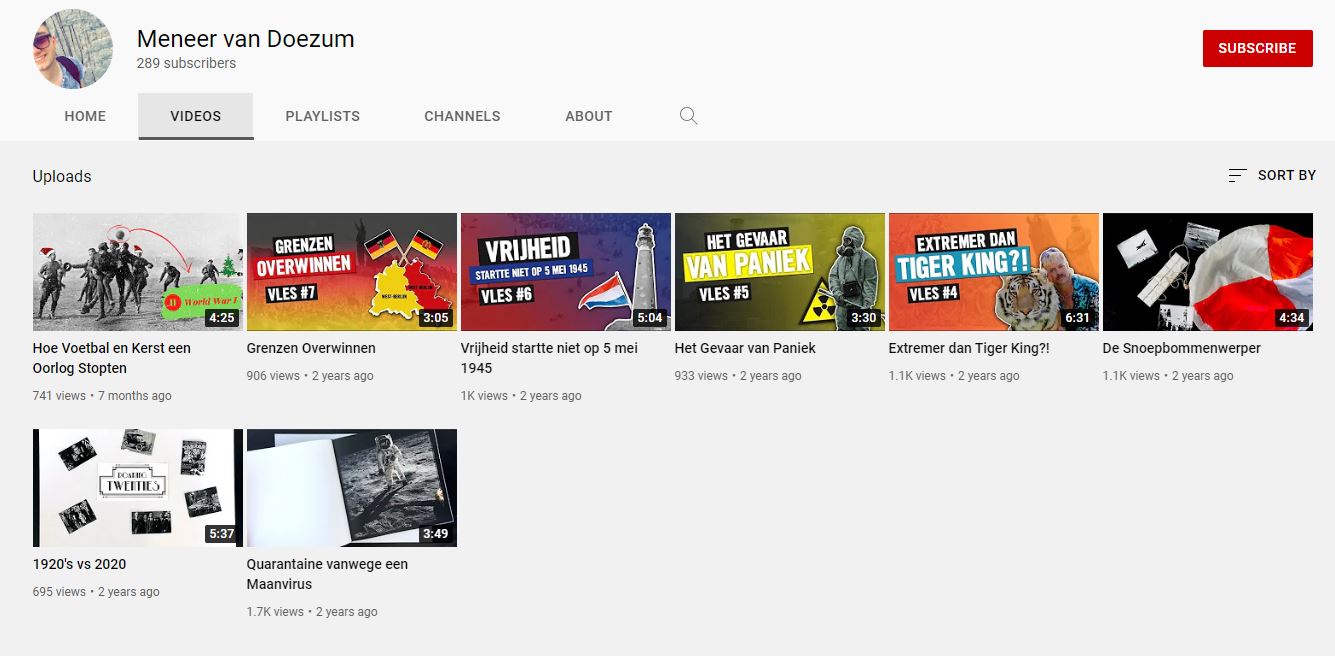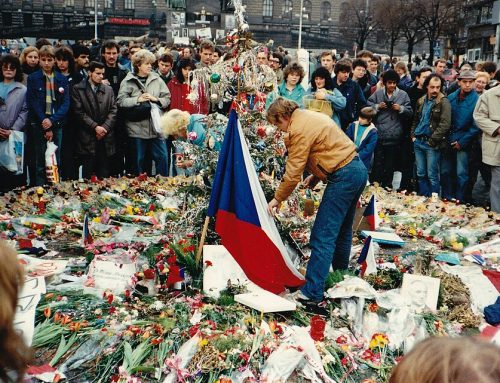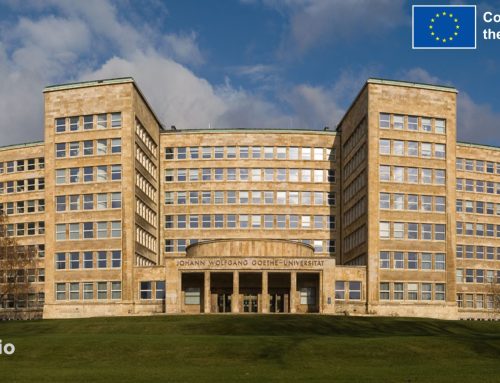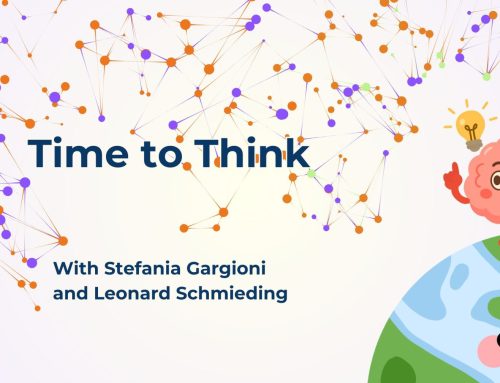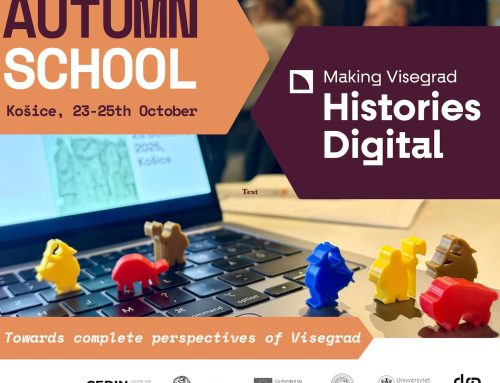Good morning, Hendrik! Thank you for taking the time to have this interview!
Our organisation EuroClio is holding a webinar series in August- September on the theme ‘History Outside of the Classroom’. We regularly have thematic months like this, during which we always look for resources and teaching practices that are in tune with the theme. When we came across your Youtube Channel and video lessons, we found that they are perfect to be shared with our network for the current thematic month.
What has motivated you to create these video lessons, and how was the experience of making them?
It was the Covid pandemic that has ‘motivated’ me. During the lockdown, schools were closed, so every teacher was asking, ‘what do we do?’. We had Zoom, we had Google Meets, but still nobody really knew what was coming, what would happen to the world. Everybody was in the phase of wondering, ‘what would happen to our education?’. For me, I had always wanted to make some kind of Youtube videos, so I thought this was my chance. I went from working full-time to sitting at home full-time, so you can tell I had a lot of time. On top of that, I had always been inspired by Casey Neistat, an American Youtuber, and I wanted to do something like the vlogs that he and many other Youtubers were doing. I wanted to create a teachable, educational kind of video, because I was trying to find a way to make history both entertaining and meaningful. Once I figured out ‘okay, this is the way I’ll go’, I just started making one Youtube video. Many people loved it, so I learned and made another, then repeated learning and made another again. That was how I made, I think, six videos. Then schools were reopened, and my time became limited.
Last December I tried again, because back then we went into lockdown for weeks. I made another video, same style, just with some different techniques. I learned all types of story-telling and methods. I’m really proud of all the videos, because I think they show my progress in a way, for me as a teacher, in how I think about education. It’s not only about history, but also about making things entertaining for people. It’s about telling great stories, and making the audience interested in history.
With my videos, I try to activate people to think about a topic. What does it mean? What does it mean for me? I think that is the way teachers should go – trying to activate students to think about someone they want to talk about.
I’ve also watched your videos, and I find that the topics are not only historical, but also very well connected to what’s happening in the present. How did you decide which topic you wanted to make a video on?
For the first videos, well, I’ve always loved the story about Apollo 11. I’m really a big fan of the space race, of the moon landing – that was my expertise, so to say. I also know a lot about the Cold War – here, behind me is a map of the Cold War in Europe! However, in Dutch history books, there isn’t much about the moon landing, maybe just one photo and that’s it. ‘We landed on the moon, great’. But the story is really intriguing. I could tell it to you in detail – how they landed, how in 60 years men would go from flying a plane, a kite, to landing on the moon. But I didn’t want to do that. I wanted to just tell a little bit of that story, so that people would get interested in the whole story of the space race. And that story was something we all had to do then: quarantine. The Apollo 11 crew had to quarantine for 14 days, because everyone was afraid of the ‘moon virus’.
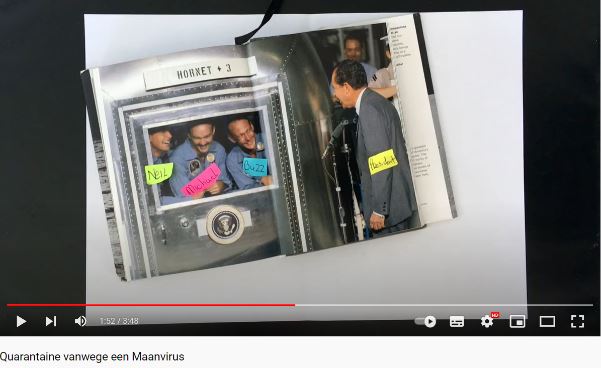
Link to the video: https://youtu.be/3QFD_deD_Qo.
If you read the title of my first video, it says ‘Quarantine because of the Moon Virus’. Everybody would easily go like, ‘What is this about?’ – and that’s what we should do as teachers. That’s the way we can get to our students, making them go like ‘Heh? Wait, I want to learn more about this one!’ The story can make everybody laugh, because everybody was like ‘yeah, there’s nothing like a Moon virus’. But they didn’t know that then! Everybody will say, ‘I know what quarantine is, I know what a strange virus is’ – so it is rooted in their present, and they can know what the crew was feeling. But the real goal of that video was, not only to try to continue education, but also to get people interested in the story of the moon landing. I like to refer to my Youtube videos as “hiding the vegetables learning”, as in the same way that we hide vegetables in our children’s food. The crew’s quarantine was just a really short part in the whole story, but it was interesting at that moment, at that time, during the Covid-19 pandemic. And I think that’s the way we should look at history: what is interesting right now?
For another example, in the Netherlands right now we’re talking a lot about farmers.* If I am to look at that, I will search for something in history that could explain why this is happening. Why farmers are mostly the ones who start a revolution, and why some people think there will be a civil war. Looking at history in that way makes a lot more sense than just following a chronological order. Like, first we had spears and we hunted animals, we became farmers, and then we’re gonna visit the Pyramids, and Greece and then Rome, and so on. Really interesting, but sometimes not all of those subjects make sense in the present time. If students ask us, ‘Why do we have to learn all of this?’, ‘because I say so’ wouldn’t be a good enough explanation.
My video about the Moon virus is not even related in the curriculum, since nobody talks about that. But it made sense at that time. And I still think it is an interesting story, because it sounds weird. Isn’t that what everybody wants to learn about? Most people subscribe to Netflix because they want to watch a show that hooks them with something that doesn’t make sense. I think we can do that too with education: grab people’s attention with something weird. History is full of weird stuff! Try to pick one topic, then try to activate your students, have them think and question – why did it happen, how did it happen, how does it affect me? Because everything affects us in some kind of way, sometimes really big, sometimes really small. How do we see it back in our time? History shouldn’t be only about the past, but also about the present and how the past is connected to that present.
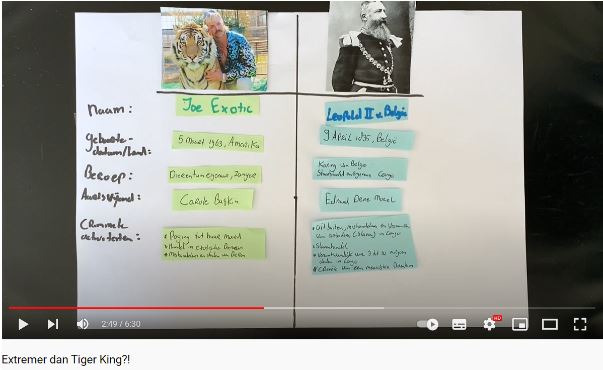
Link to the video: https://youtu.be/tRYlou9shXE.
It’s really great to hear this. Because that was also the way I got interested in history – because of some weird stuff on Youtube! It was not the lessons in the classroom that drew me toward history; rather, something that triggered my curiosity.
Yea, if you ask history teachers why they became history teachers, a lot of them will either say ‘It was because of my history teacher’, or because of one subject. Not because of the whole history, no. No history teachers like the whole history, nobody! History teachers often say to their students: Today, we’re gonna have a great time because I really love this particular subject.’ If you love a subject, start there with the students, because your love will go over to them, and from there you can unravel history with them.
You can go back and forth in history with the topic. You have to contextualise it, and with your students, make links between different historical phenomena. Explain to them why something happened, say, 4000 years ago, and we are still thinking about it today. Democracy is one of those things. We talk a lot about Greece, about the myths, about their beliefs, but one really interesting thing is the way they thought about how to rule and run a country. The democracy they talked about at that time and how we think about democracy now are two completely different things. But the links can help students understand more about the concept of democracy, for example when we teach them about the revolutions in the 19th-20th century. That’s when we can discuss with them where it originated from, how people at that time came to these ideas. I also try to make links like this in my videos.
I think you did a really great job with your videos, I really enjoy watching them. They’re really funny sometimes, with all the references to popular culture (all the memes!), but also very thought-provoking, with various analogies between the past and the present.
I think I’m not in the art of teaching, but the art of story-telling. Story-telling is the best way to teach people. I think many good story-tellers use humour, comedy, as their weapon. Teachers can also use comedy as one of the ways to talk about history. You can teach about many things, but if you can make a joke about something, or can form something into a joke, students will remember. They really do.
Do you know what a Frikandel is? It’s a long, brown delicacy from snack bars, which they often cut up in half and fill with ketchup, mayonnaise, and onions. It’s a typical Dutch food. One of my friends uses a Frikandel speciaal to teach students how laws are made in the Netherlands! He even brought the snack to his classroom and ate it. Thanks to the Frikandel, all the kids know and remember for 10 years how a law is formed! That’s humour, that’s comedy, especially when those are two completely separate things, which don’t even match, and are very tough to compare. But that’s how we should teach. We should first of all look to the kids – what do they like, what do they want? – and build on that, try to connect important things to their perspectives.
Did you ever try to bring the videos into your classroom, after the Covid lockdown has ended? Did you show your students the videos?
Yes, it’s their homework! I use a lot of videos as homework, not only the ones that I made but also those I searched up from the Internet. Because learning from videos, or dual-coding as it’s called in educational terms, really works. I used some explainer videos, which explained something that textbooks might take 4-5 pages to explain. The videos can do it in 2-3 minutes, with funny jokes and great contents. First of all, I let the kids see those videos, and then we build on that: what was it about, what was important, what wasn’t important, what do you think is the one thing that everybody should know? Sometimes I also use my videos just as a starting point. The students get really interested when they look at a video and think, ‘Yeah, hmm, I know a little bit about this!’ And from that, we analyse the story together.
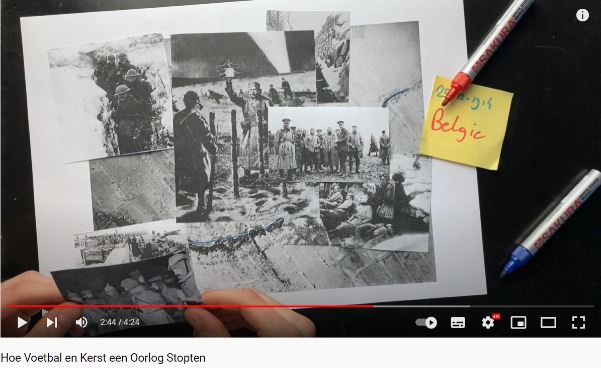
Link to the video: https://youtu.be/WHDv8JZCyDo.
I made a video about the Christmas truce in 1940. The Christmas truce tells you everything you need to know about the First World War – about nationalism, about the trenches, about how everybody was tired of the war. It’s meaningful to look at these aspects of the story, and the kids like doing it because they get to be involved with the story, they’re not just hearing but are also trying to analyse it, trying to experience it in some ways, and trying to make it their own. And I think that’s what history also is – making it your own.
So your students really like the videos?
Yea. In one video I climbed on a roof, and it became a bit of a running gag! They like it because it is real. It’s real, it’s meaningful, it sparks a passion, since they can see that I’m passionate about telling history stories. At that time, we could only do online lessons, so they really got disconnected from schools. And the videos became some sort of way in which the students could be re-connected. That was important to me – that students could see that I was really trying to continue their education. Not like, ‘yea schools are closed, we don’t know what to do, good luck everybody, we’re gonna see each other in 4-5 months.’ No, I tried to continue speaking with them, and the vlogs are great for that, because in a vlog you’re speaking with the camera as if you’re speaking with one person at a time. You’re not speaking to a whole entire audience; the one who sees it thinks you’re speaking to them directly. That’s really important, because we can’t do one-on-one teaching, but we can use this type of format to try to analyse a subject or bring a subject up, try to interest somebody. It really works because they really think ‘oh, you’re talking to me’.
You said that you’re inspired to do this by an American Youtuber, and I think it’s really likely that some teachers will also be inspired like that, by you, to create these video lessons or use them in their classrooms. But what do you think will be some of the challenges for them if they decide to do so?
Time. It’s just one thing, time. Some people think that to create a video, the only thing you have to do is turn on the camera, talk to the camera, post it on Youtube. No. It took me a whole week – I think about 60 hours – to make one video. First of all, brainstorming, scripting, analysing the script, rewriting the script, because story-telling is all about rewriting, writing and writing again. Then recording the video, recording some parts again, changing the story, cutting it, editing it, and publishing it.
I work full-time as a teacher, I can’t make videos and teach – it has to be either one or the other. If I want to do both, I’ll have to teach 3 days and make videos 2 days a week, which is not what I’m at right now. I think that I can make a true impact in the classroom, and I’m grateful that both I and the students get to be back in the classroom – that is where every teacher shines. But if you want to make videos like I did, you really have to take your time. And I think if the educational world gave us that time, it would be great. Then you can really invest the time in the videos, in making a great programme, and can use the videos for four, five, six years in a row. But as a teacher right now, I hardly have any time left to do this.
I think that it was kind of a blessing in disguise that you had the time during the pandemic to make the videos.
Yea, it was indeed a blessing in disguise. And it really taught me to think about education in a different way. I don’t think about education as mainly teaching, but mainly as story-telling. I think every good lesson should have an Act 1, Act 2 and Act 3 – a beginning, a middle, an end. It should have a good starting point. Because if you just start like every other teacher, ‘Welcome, today we’re gonna talk about the First World War, we’re gonna do this and this and this, okay let’s get started,’ then most of your students are already out, they’re like ‘nahh’. So start with something that really gets them.
A couple months back, I started my lesson with a picture. I gave one student a picture and told her: ‘This picture could have ended the world.’ She was like, ‘What?’. I said, ‘Tell everybody what you see.’ She began to describe: ‘I see a picture from the air, err… some leaves, some bushes, some tracks, uhh… a hole, some texts,…’ And everybody was thinking, ‘What’s on the picture? Why could it have ended the world?’ Well, it was a picture taken of Cuba, during the Cuban Missile Crisis. And everyone was hooked, ‘Wowow, what happened? The world could have ended that day?’. ‘Yes, it could have ended,’ I said, ‘And now I’m gonna tell you the story why’.
Later, some students told me: ‘That was one of our favourite lessons, because we really got to know something that we wanted to know.’ Not you or I wanted them to know, but they wanted to know. And that should be our main goal. We should try to activate them to get more knowledge. Because students like learning, just not in the way we sometimes think is “good” in education. Don’t tell them, ‘You have to learn this, this, this, this thing, because I say you have to.’ Instead, try to make sense of why they should learn them.
I think that was my last question. Thank you again for sparing your time for this interview, it’s a really fascinating talk! If there’s a chance, I hope to see more videos from you!
Thanks!
*More information on Dutch Farmers’ Protest in The Netherlands can be found here.
Register now for EuroClio’s webinar series, ‘No Books Required: History Outside of the Classroom’: https://bit.ly/3vC36Qs!

